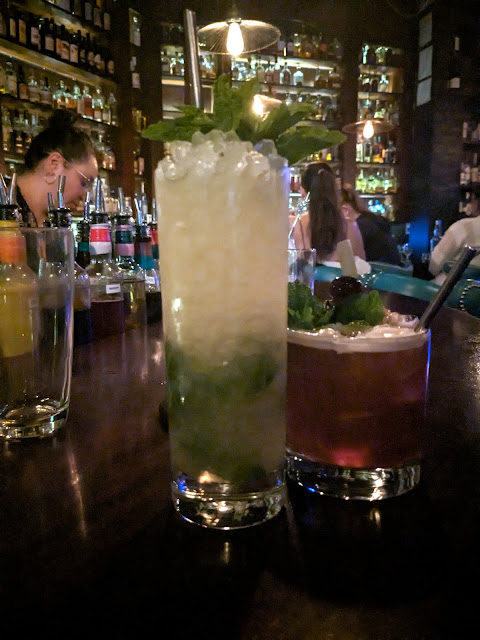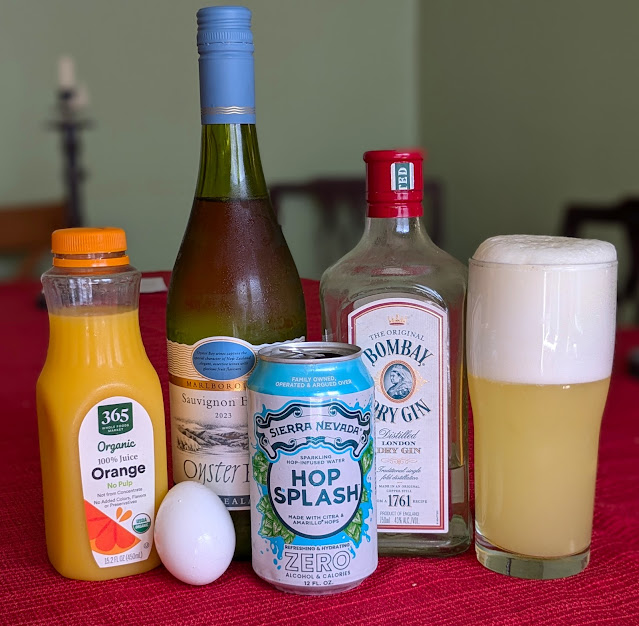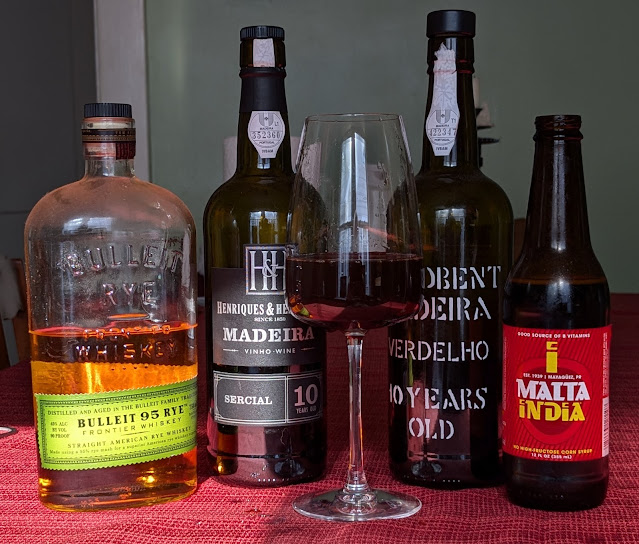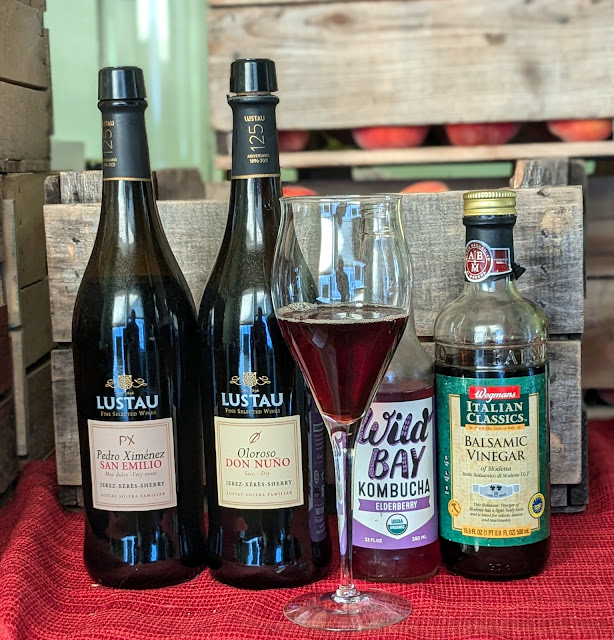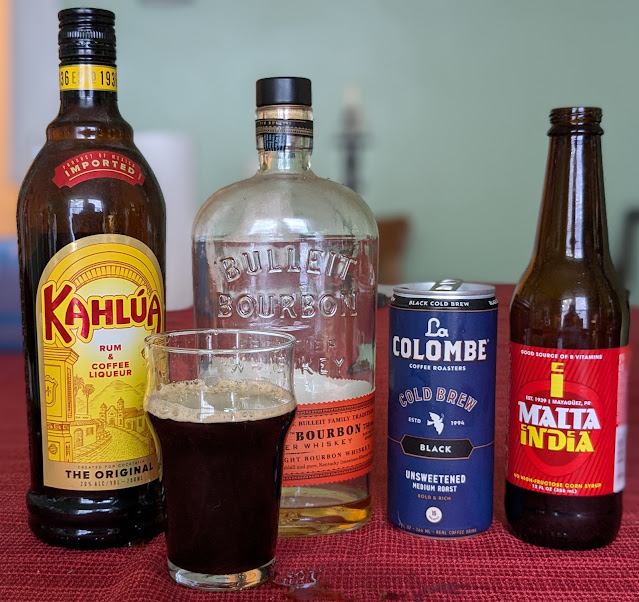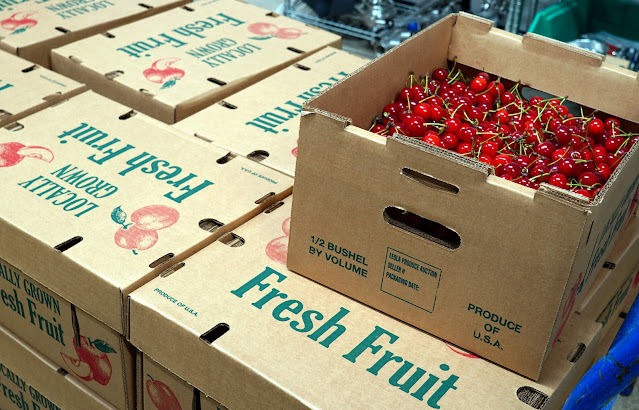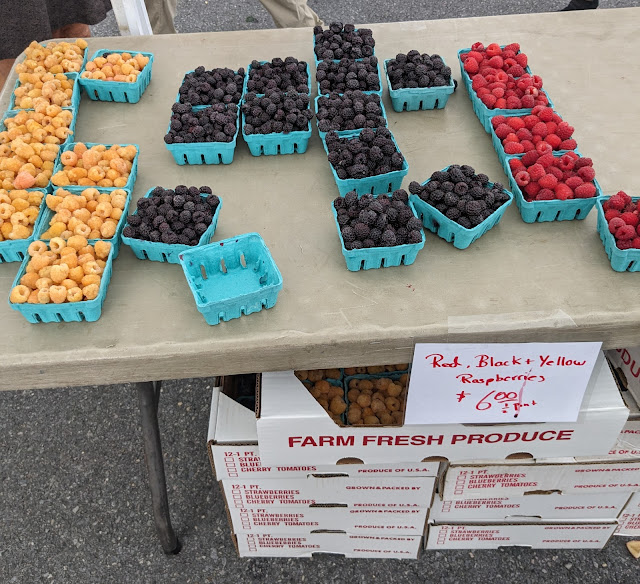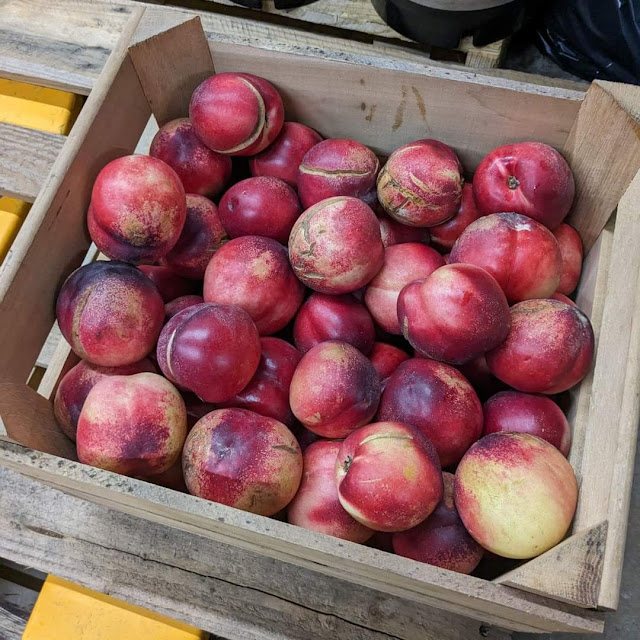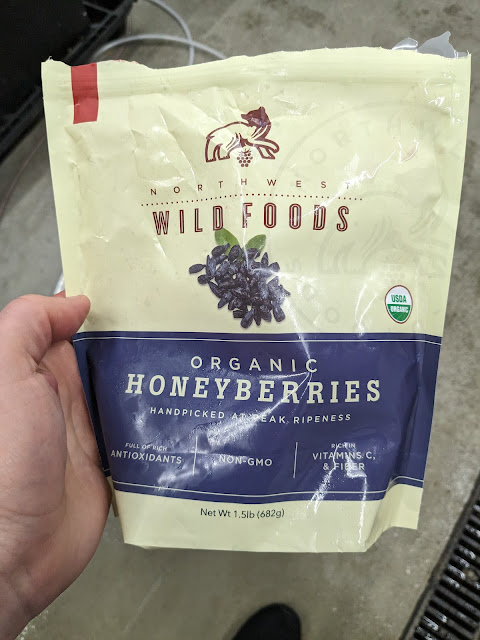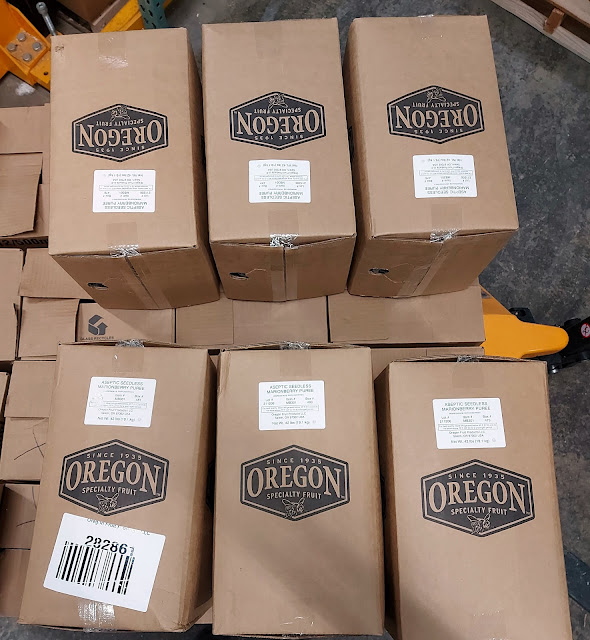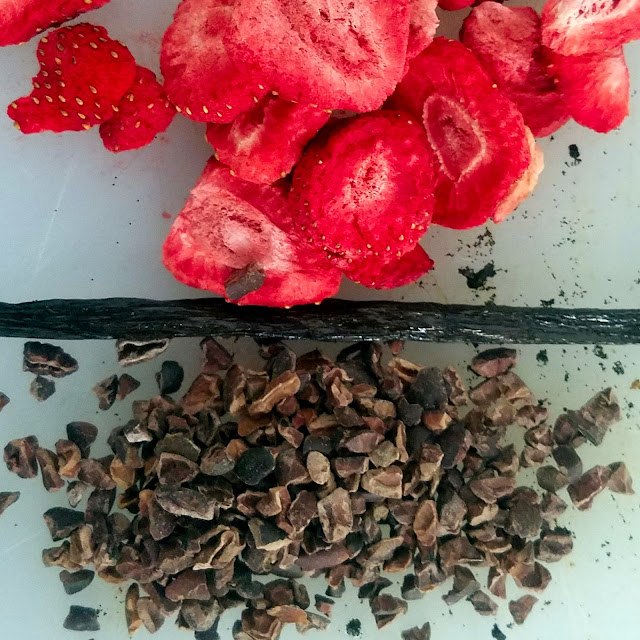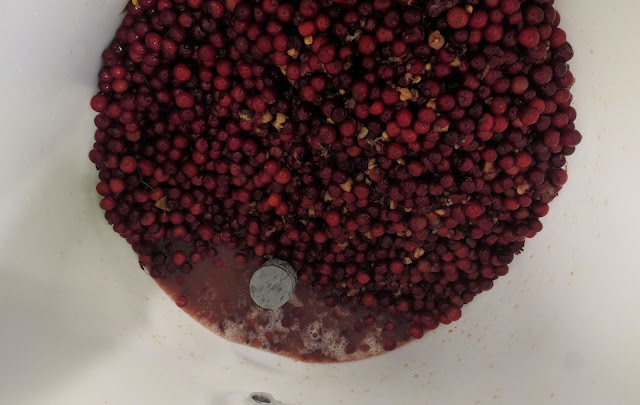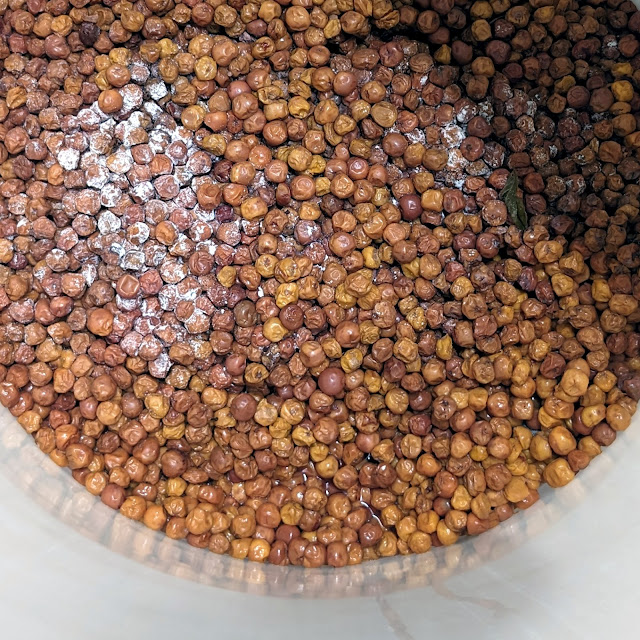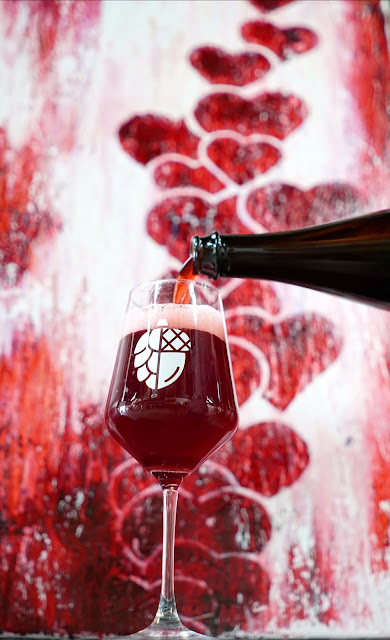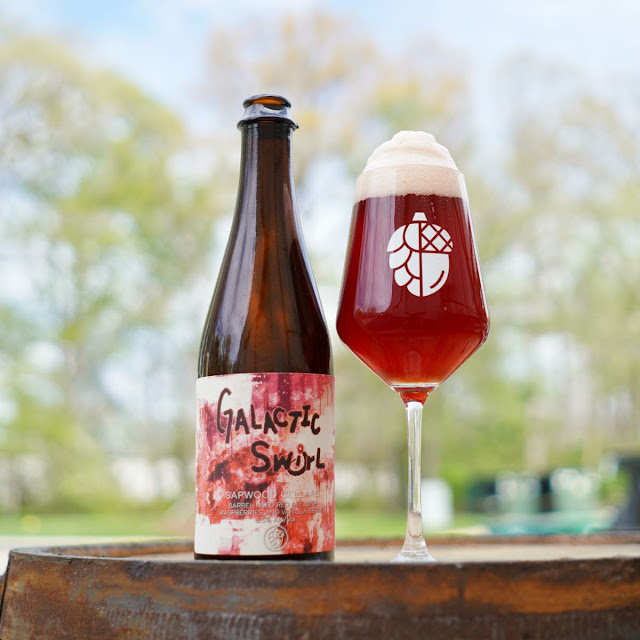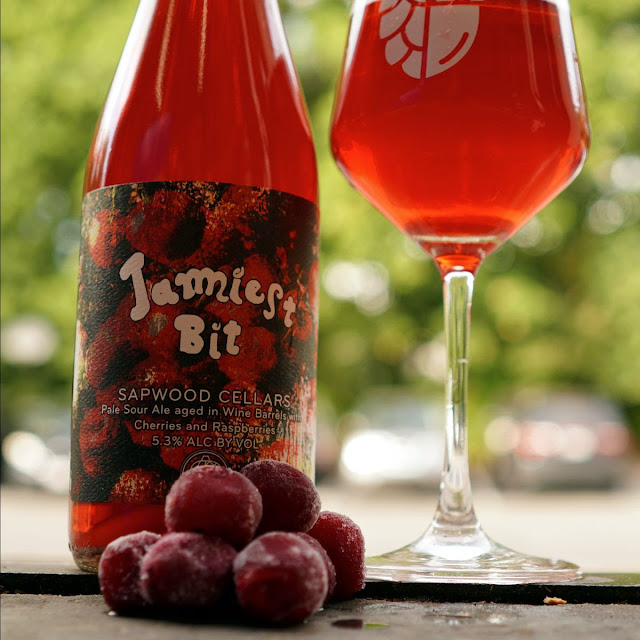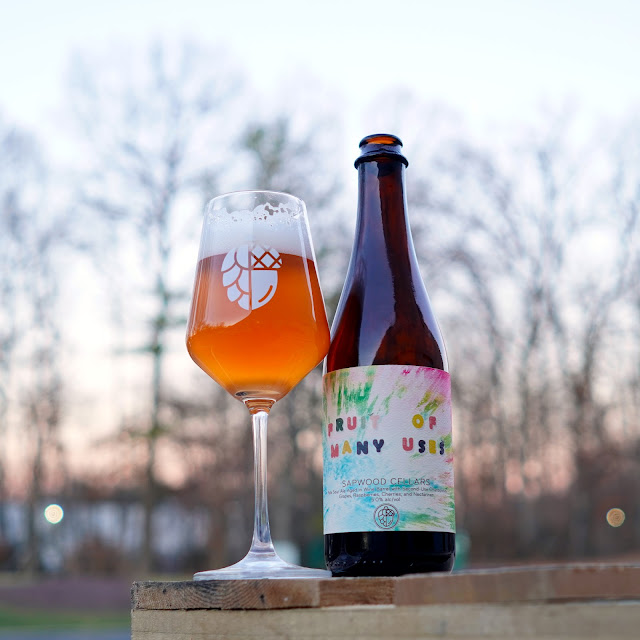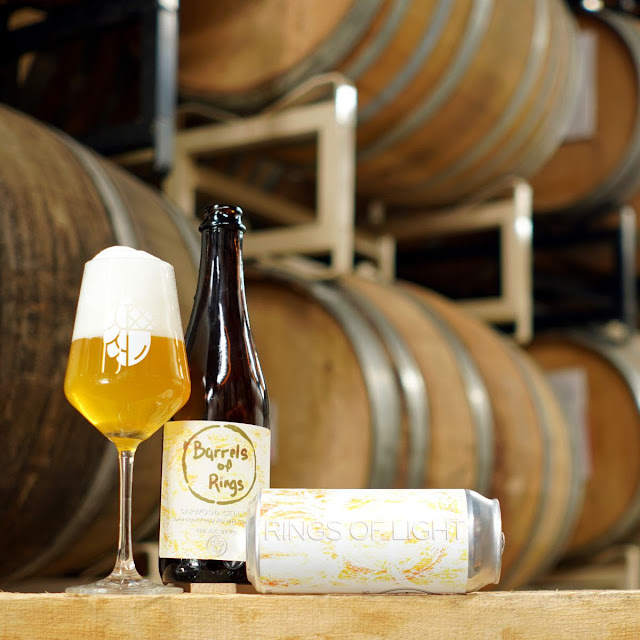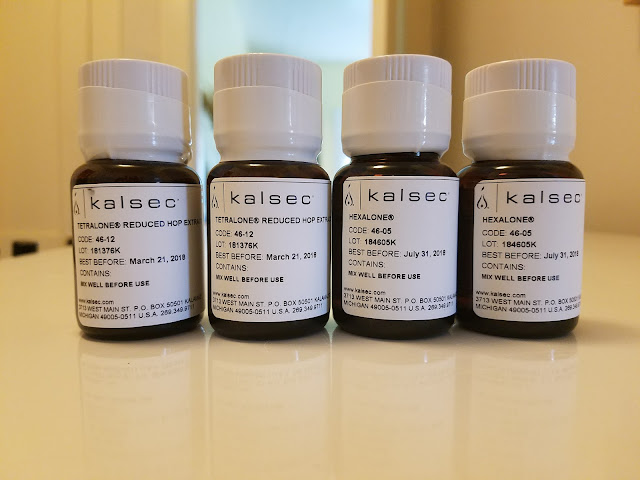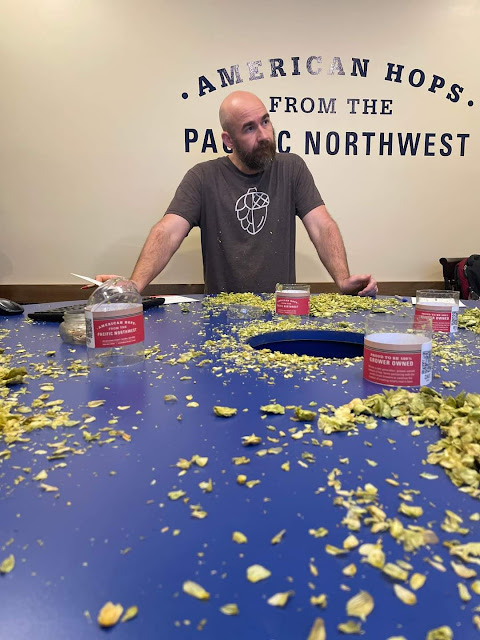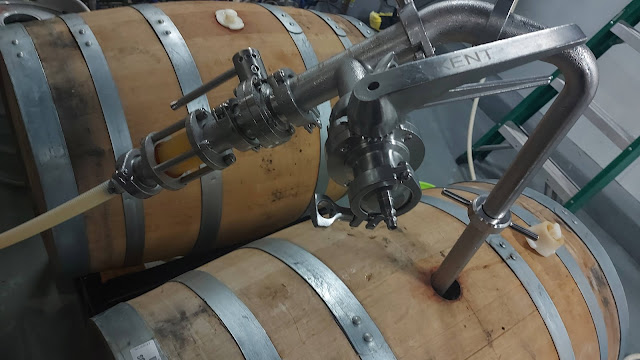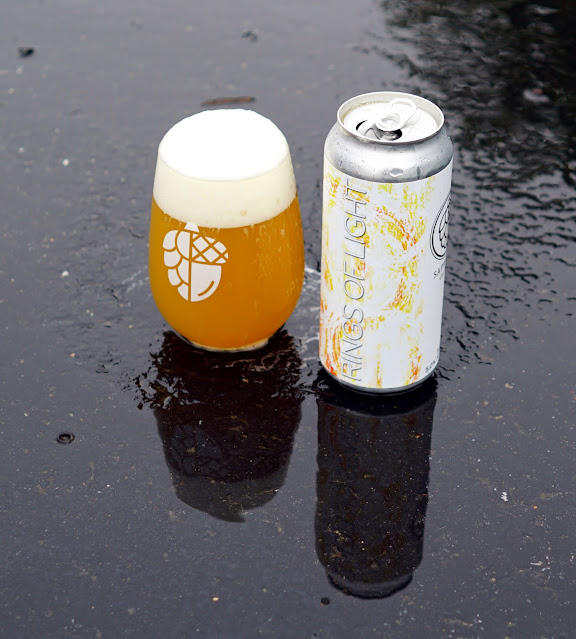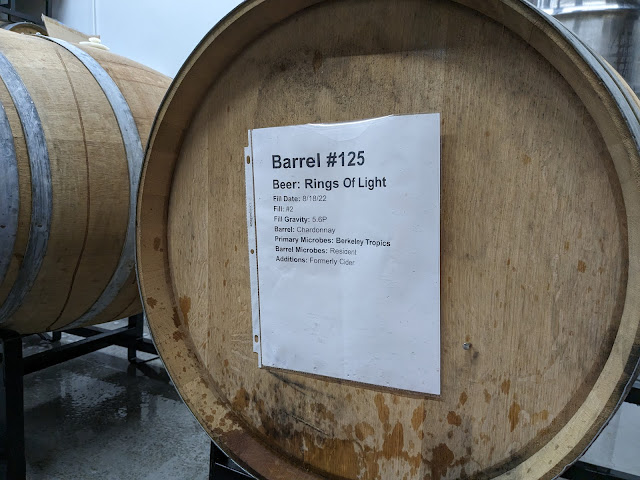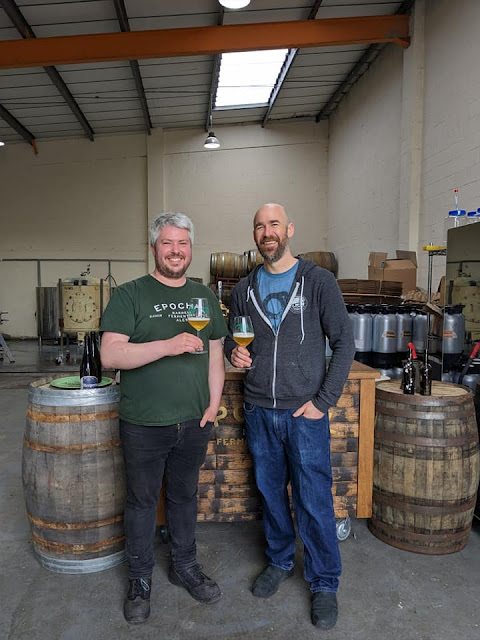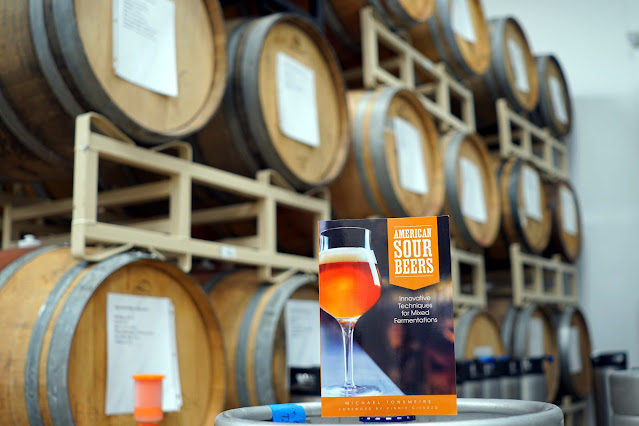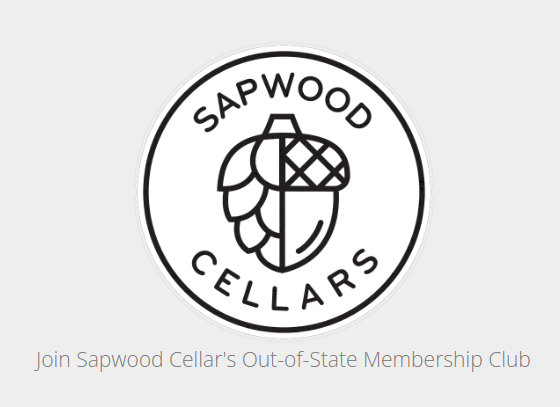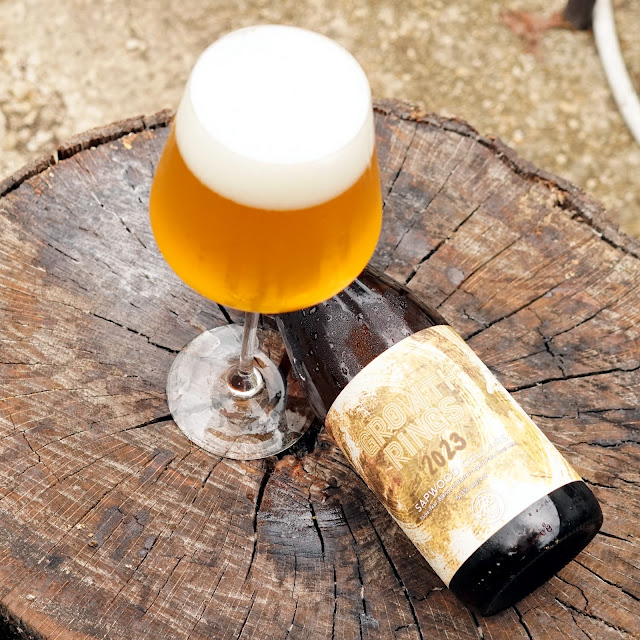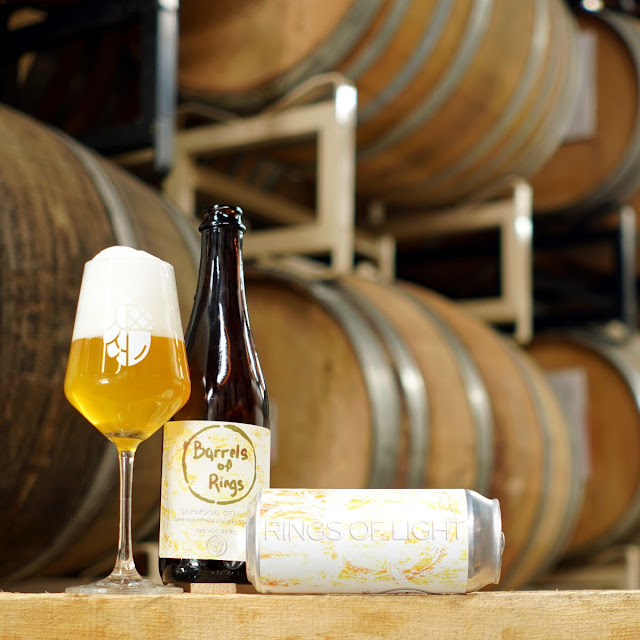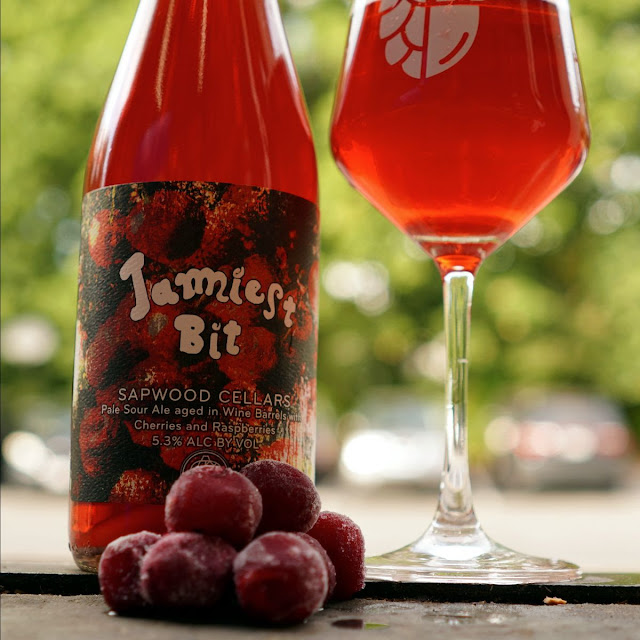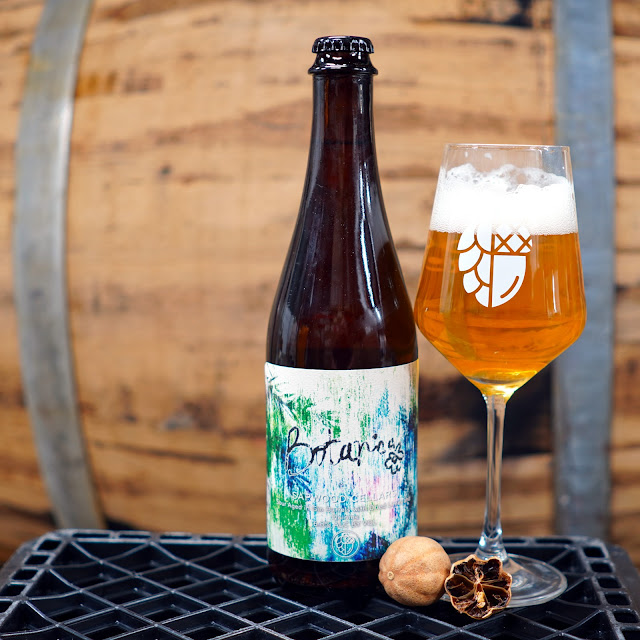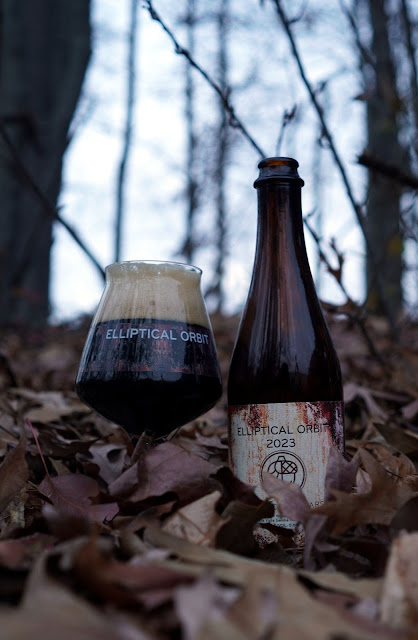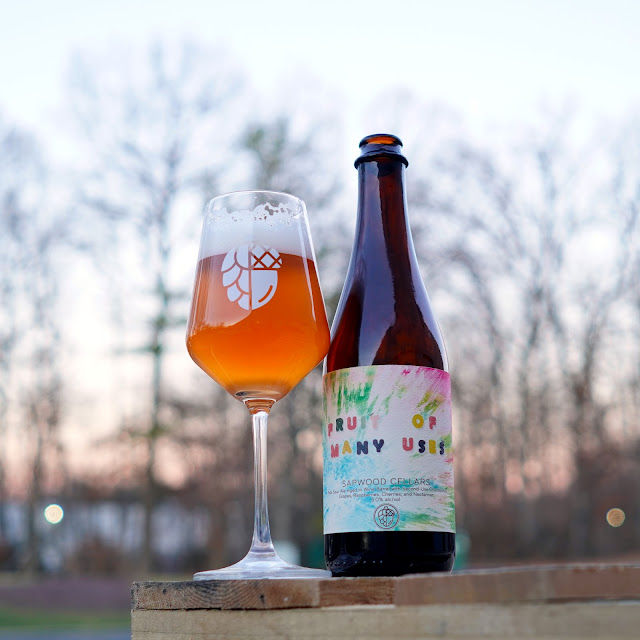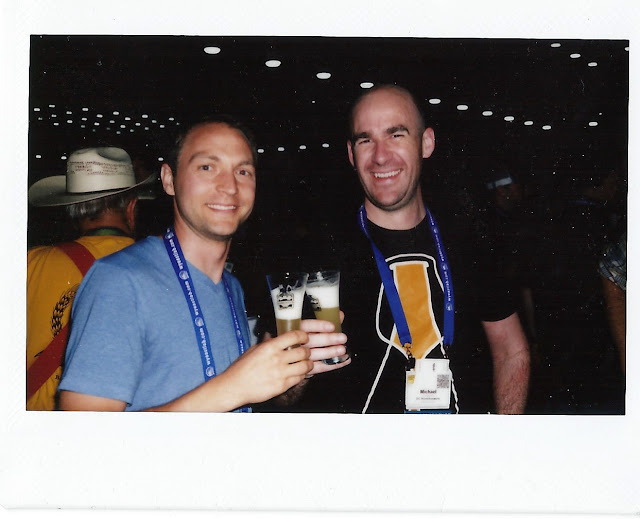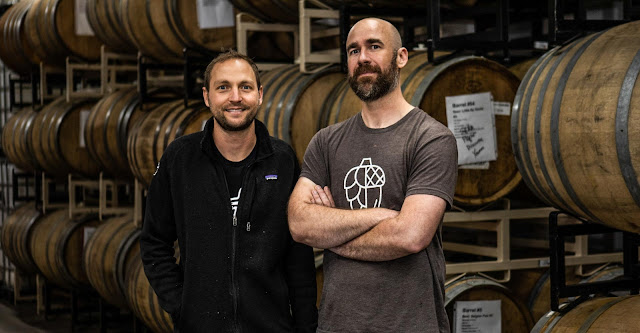dry
Ice cream soda floated into our collective consciousness 150 years ago. Now, a beery take on this fanciful beverage is winning converts.
The post A Dreamy Pairing: Beer & Ice Cream appeared first on CraftBeer.com.
 The brewery will be celebrating the milestone limited release with a complimentary tasting, including other new beers, on 29 August.
The brewery will be celebrating the milestone limited release with a complimentary tasting, including other new beers, on 29 August. As someone with a "beer-centric" palate, it is often difficult for me to find cocktails that I enjoy. When I go to a cocktail bar and order something that sounds interesting, the flavors are often overwhelmingly concentrated, and the balance tends to be either super-sweet or super-boozy. The 20-30+% ABV of most cocktails also makes them rough to drink at the same rate you would a beer...
So, I thought it would be interesting to invent a few cocktails inspired by the balance and flavors of some of my favorite beer styles. If you want to drink something that tastes exactly like a beer… drink a beer! These cocktails are “inspired” by the flavors in the style and the overall balance of the style in terms of alcohol-bitterness-sweetness, they aren’t meant to be “ringers” for drinking a given beer. I'm also trying to avoid "uncommon" ingredients... although some of these may take a little searching at a specialty grocery/liquor store or online.
I’m not an experienced bartender or mixologist, if you try one of these let me know what you think and if you have any suggestions!
Ramos Gin Fizz... Hazy IPA
Gin and Tonic is my standard cocktail order because it isn't too strong or too sweet, and the bitter/herbal notes are something I appreciate. I also find Ramos GIn Fizz to be a fun one, with the added body of an egg white and cream, and more citrus from lemon juice and orange blossom water. In this "Hazy IPA" inspired riff, I swapped out the tonic for aromatic hop water. To replace the malt sweetness and enhance the juicy flavors from the hops I added orange juice. To keep it from being too one-note orange, I added New Zealand Sauvignon Blanc, which contains high concentrations of many of the aromatics produced by Thiolized yeast and found in New Zealand hops. An egg white helps to add haze, foam, and body.
Recipe
In a shaker, combine:
1.5 oz Bombay Dry Gin
1.25 oz Orange Juice
1.25 oz Oyster Bay Sauvignon Blanc
1 Egg White
Dry shake 10 seconds
Pour into a glass, then top-up with:
6 oz Hop Water
6.7 % ABV
Ingredient Notes: The Hop Water you choose is up to you. I've enjoyed the ones from breweries as well as places like Hoplark. You can also make your own with carbonated water and some hop terpenes (I like the ones from Abstrax). Use pasteurized egg white if you are worried about the risk of salmonella. If you don't like orange, try mango or another juice that appeals to you.
Tasting Notes
Smell - Winey tropical-citrus. Slight herbal from the hops and gin. Doesn't read obviously juniper.
Appearance - Very pale, very hazy. Great sticky head.
Taste - Pleasantly sweet. Good balance of the juice and wine, without either dominating. The gin provides some depth, but again not overtly gin-y. The hop water brings herbal complexity without dominating the other ingredients with "hops."
Mouthfeel - Medium-light body, light carbonation.
Drinkability - Light and bright, citrusy.
Changes for Next Time - Certainly could add a few drops of hop terpenes if you want to send it more hoppy. Some hopped bitters could be a nice addition if you like a little more bitterness.
The Charleston... Rye Barrel English Barleywine
Thanks to Audrey, I've really come to enjoy fortified wines like Port, Sherry, and especially Madeira. It's traditionally made by halting fermentation with an addition of brandy to preserve the sweetness of the wine, then aged at elevated temperatures. The result is a like a concentrated barrel-aged English barleywine, woody, with dried fruit, and pleasant oxidative notes. I added Rye Whiskey to elevate the vanilla notes. Malta is essentially unfermented wort, but tends to have big caramel and malt extract notes from pasteurization. It helps by lowering the alcohol without thinning the cocktail, adding a little carbonation.
Recipe
Combine together:
.5 oz Bulleit Rye (95 Proof)
1 oz Broadbent 10 Year Verdelho Madeira
1 oz H&H 10 Year Sercial Madeira
Stir, then top with:
2 oz Malta India (or Malta Goya)
14.0% ABV
Ingredient Notes: Madeira comes in various sweetness levels, the really sweet ones are too sugary for my tastes in this. Sercial is the driest and Verdelho is off-dry, but find ones that work for your palate.
Tasting Notes
Smell - The vanilla/oak of the rye leads. Rich dried fruit behind it. There is some maltiness there, but definitely tastes like a really aged-out barleywine without any fresh graininess. Boozy, hotter than I'd expect from an English barleywine.
Appearance - Deep leathery brown. Good clarity. No head.
Taste - The Maderia really gives it an "aged" character, lots of raisin and date. The Sercial especially gives it a fun oxidative weirdness, and a faint acidity. There is a "sugary" sweetness, along with some alcohol warmth. Subtle bitterness.
Mouthfeel - Almost flat, "barrel sample" generously. Not quite as full as a real barleywine, but not watery or thin by any means.
Drinkability - This is one of the more evocative ones, really has a lot of the flavors you'd expect from a barrel-aged barleywine. It's a little sweet for me, but so are a lot of barleywines.
Changes for Next Time - Wish it had a little more carbonation. Otherwise it really satisfies that English Barleywine itch.
Sherry Shrub... Flemish Sour Red/Oud Bruin
One of the classic inclusions in the microbe blend for Flemish Red/Browns (e.g., Wyeast Roeselare) is Sherry Flor. This oxidative yeast forms the pellicle on sherry and produces the characteristics aldehydes that give sherry a nutty/fruity aroma. Oloroso is more "microbe" forward, funkier, while PX is more sweet and dried fruit (especially raisin). The acidity of the grapes needs a little help to mimic the classic examples of the style, so inspired by shrubs I added both vinegar and kombucha. The blend of sherries, sweetness of the kombucha, and amount of vinegar are all variables you can adjust.
Recipe
Combine together:
.5 oz Lustau Oloroso Sherry
.5 oz Lustau PX Sherry
.25 tsp Balsamic Vinegar
Stir, then top with:
3 oz Wild Bay Elderberry Kombucha
4.6% ABV
Ingredient Notes: The kombucha choice is tricky, a cherry kombucha is a nice choice if you are looking to replicate a fruited version of the style. For my palate I'd avoid those kombucha with stevia or other non-sugar sweeteners. Cream Sherry is a blend of Oloroso and PX and could be a stand-alone replacement (although you the flexibility or tweaking your blend).
Tasting Notes
Smell - Fun mix of red fruit and raisins. A little oak/almond. The elderberry works well compared to some other kombuchas since it isn't as distinct as cherry, strawberry et al. I like the Wild Bay since it doesn't have stevia or other non-sugar sweeteners.
Appearance - Clear, more amber than red. Color is about right. Not much foam.
Taste - Pleasantly sweet. Tart, with just a touch of vinegar. It has a good blend of fresh and dried fruit flavors, plum, fig, raisin etc. A little oaky. Has that classic Belgian Red balance with sugar balancing the acid.
Mouthfeel - Medium body, pleasant low carbonation.
Drinkability - This is a super interesting result for low ABV.
Changes for Next Time - Misses the maltiness of the real version, but it has the fruitiness, acid, oak, age. For a low ABV cocktail it really delivers, with the fermentation of the kombucha helping stretch the Sherry.
Espresso Martini... Coffee Stout
Flavored beers are one of the "easiest" points of entry since they already have big flavors that aren't from malt, hops, or yeast. That said, it seemed like a waste of time to make a smoothie sour cocktail. Coffee stout is still a stout, and seemed like a nice place to work in bourbon since it usually includes some barley and brings big oak aromatics that work well in stouts. A little Malta again provides body, sweetness, and a touch of carbonation.
Recipe
Combine together:
4 oz Cold Brew Coffee
1 oz Kahlua
1 oz Bourbon
Stir, then top with:
2 oz Malta India
7.5% ABV
Ingredient Notes: I should probably have sourced a "better" coffee liquor, but Kahlua is what we had on hand. Homemade cold brew would work just as well, if not better.
Tasting Notes
Smell - Big coffee nose, with some vanilla. It reads caramel malty, but not roasty.
Appearance - Deep brown, with red at the edges when held to the light.
Taste - Has a pleasant sweetness, certainly sweeter than a typical coffee stout thanks to the simple sugars. Nice note of bourbon woody/vanilla in the finish
Mouthfeel - Medium body, light carbonation.
Drinkability - I really like this one, more coffee-focused than a stout usually is, but the other notes round it out.
Changes for Next Time - I think this one straddles the line between traditional coffee stout and pastry stout. A little sugary compared to a classic stout.
Conclusion
This has been fun for me to work on the last couple months. I'll probably make a Part #2 if there is interest... already playing around with a West Coast Grapefruit IPA, Pastry Stout plus plans for Wit, Rauchbier, and Saison!
Shoot me a line if you try any of these out, or if you have suggestions or other ideas!
What's behind the collaborative nature of the global brewing community?
The post Shared Experience: Craft Beer Camaraderie Transcends Borders appeared first on CraftBeer.com.
The market is responding to the growing demand for flavorful, well crafted non-alcohol beer.
The post The NA Way: The Rise of Non-Alcohol Beer appeared first on CraftBeer.com.
 From Irish stout to hazy pale ales, Beer & Brewer rounds up the best non-alcoholic beers for Dry July.
From Irish stout to hazy pale ales, Beer & Brewer rounds up the best non-alcoholic beers for Dry July.  This week I take a look at fermentation considerations when brewing a very high gravity beer such as an Imperial Stout or Barley Wine. Last week in Part 1, I covered several methods for achieving a very high starting gravity. Selecting Your Yeast Now that you have a high gravity wort, you need to consider […]
This week I take a look at fermentation considerations when brewing a very high gravity beer such as an Imperial Stout or Barley Wine. Last week in Part 1, I covered several methods for achieving a very high starting gravity. Selecting Your Yeast Now that you have a high gravity wort, you need to consider […]  This week I take a look at the brewing of very high gravity beers to include styles like Barley Wines and extreme Imperial Stouts. These beers require somewhat special handling as it can be hard to achieve the very high starting gravity and a good fermentation, and in addition they often require extensive aging. Very […]
This week I take a look at the brewing of very high gravity beers to include styles like Barley Wines and extreme Imperial Stouts. These beers require somewhat special handling as it can be hard to achieve the very high starting gravity and a good fermentation, and in addition they often require extensive aging. Very […]  This week I look at methods to reduce oxygen in your finished beer. Oxygen is known to negatively impact beer flavor and long term stability. While oxygen is widely used at the beginning of fermentation to aid in yeast growth, the yeast effectively scrubs virtually all of the oxygen out of the beer during fermentation. […]
This week I look at methods to reduce oxygen in your finished beer. Oxygen is known to negatively impact beer flavor and long term stability. While oxygen is widely used at the beginning of fermentation to aid in yeast growth, the yeast effectively scrubs virtually all of the oxygen out of the beer during fermentation. […] While I love the pure expression of malt, water, hops, microbes, barrel, and time... fruit can make a fantastic addition to a barrel-aged sour. From a "sales" standpoint it is also easier to explain the difference between beers with fruit, than those with subtle differences in grain bill or microbes. Most people know they like cherries, plums, and raspberries... they may not know they enjoy horse blanket, minerality, or rubbery notes.
This is the third in a series of posts updating my thoughts from American Sour Beers ten years ago. The two beers featured below (Jammiest Bit and Fruit of Many Uses) were both part of the first shipment of the Sapwood Cellars Out of State Shipping Club. Memberships for that shipment are closed, but you can still sign-up now for the next shipment fall 2024 ($146/shipment including shipping). Bottles of both are still available at the tasting room!
Sourcing Fruit
I would almost always rather use fresh in-season local fruit over a puree, juice, freeze-dried, concentrate, and especially natural extract. Local produce tastes unique, meaning a beer that doesn't taste the same as one brewed on the other side of the country or by a larger brewery. You'll get a more complex character from having beer in contact with the stems, skins, pits etc. Working with farms, orchards, and vineyards "fits" the narrative of an artisanal product... making it look good on social media too! Not to mention our fruiting tanks (without conical and glycol jackets) work best with whole fruit rather than purees.
Talking directly to farms and orchards at farmer's markets is a great place to start. Tasting things, chatting about what sort of capacity (and excess) they might have. Sometimes you can get a good deal on seconds... but for me these often aren't worth it since it can take a lot of time and effort to sort them (going rotten before they are all ripe) and cut-out mold etc.
We've used IQF (Individual Quick Frozen) fruits several times with great results. For smaller batches I've just gone to supermarkets, found a product I like the flavor of... and bought out a couple locations. Online specialty purveyors like Northwest Wild Foods have weird things you might not find locally, like honeyberries. For lager batches we've ordered from Coloma Frozen Foods, but don't do it regularly as refrigerated shipping is expensive. Recently we've been getting our raspberries from Twin Springs Fruit Farm (which freezes their own). Using high-quality frozen fruit is something great lambic breweries do, and it allows to extend the fruiting season so you don't have to have enough tanks for all of your fruit beer at once!
That said, not all fruits are available locally. You can certainly source whole fruits from a good local produce supplier (and we have), but purees have their place too... especially in "smoothie" type sour beers. That said, there is no magic bullet on sourcing them. We've used Oregon Fruit, Greenwood Associates, Kerr/Ingredion, Asceptic Fruit Purees, Hop Havoc, Boiron, FruitGuild, and Araza. None of them are "always good" and none of them are always bad. It's often about preference. For example, Oregon Pineapple is thin, closer to juice, great for an IPA where you'll drop out the solids. Araza Pineapple is much thicker, perfect for a smoothie sour. Both taste great.
Frozen wine grapes are another great option, either juice or must. Again, I love working with local vineyards (Crow Vineyard and Winery has been especially nice to work with), but that isn't always an option! We've had good luck with Grapes for Wine and Wine Grapes Direct.
The only concentrates I've enjoyed are "freeze" concentrates (the wild blueberry and raspberry from Greenwood Associates are great). I've disliked the flavor of all of the standard high-concentration "boiled" concentrates which end up tasting like caramel, and are so thick that they are difficult to mix with beer. Granted, after an early batch with concentrates from Kerr we really haven't tried any more. On the other hand, Kerr's NFC (Not From Concentrate) raspberry juice was terrific, so I suspect the issue was the concentration.
Freeze-dried fruit can be a pretty good option for tropical fruits like mango. I've yet to find a mango puree that didn't taste cooked. The freeze-dried stuff tends to have a brighter "mango popsicle" flavor. It can be pricy, but there is a lot of flavor pound-for-pound. North Bay Trading generally seems to have the best bulk pricing.
Processing
We have a chest freezer at the brewery so we can keg fruit when it is ready, but not necessarily have to go onto it immediately. Freezing the fruit also helps break the cell walls allowing better/quicker contact and refermentation. Just make sure to line your freezer with cardboard so the bags don't stick to the interior. That's all we do for berries. Freeze them, let them thaw in the tank, then transfer beer on the next day.
When it comes to larger fruits (e.g., stone fruit like peaches and nectarines) we'll manually quarter them and discard the seeds/pits. In an ideal world we'd selectively process and freeze the fruit on a flow basis as it reached peak ripeness.
I've never had good luck with fermented citrus, so for limes, lemons, oranges, and grapefruit we use the zest. We use a Starfrit Electric Rotato Express. It struggles a bit on really large grapefruits, and we go through a couple a year as they just aren't sturdy enough for a "production" environment.
There is some science that cherry stems have glycosides that Brett can work on to free fruity aromatics... but in practice I find they add a "stemmy" flavor that reminds me of dried leaves. I like the pits though. Obviously nice to find a source that has your preferred processing so you don't have to do it!
However you process the fruit, purge the tank with CO2 thoroughly before transferring beer in. This will help ensure the brightest, freshest, fruit expression possible!
Reyeasting
We usually repitch rehydrated (with StartUp/GoFerm) wine yeast along with the fruit to ensure a rapid refermentation, scavenge oxygen, and enhance the fruit character. While our sour beer production area has "light" HVAC, we don't have jackets for our fruiting totes (Flextanks). As a result, we'll change our yeast depending on the seasonal temperature. Usually using more heat-tolerant red wine strains in the summer, and cool-loving whites in the winter.
We also add a small amount (5-7 PPM) of hop extract to prevent additional acidification if the beer is already sour enough for our tastes. See my article on hopping sours for more details.
Fruit Contact Time
I've slowly come to be an advocate for relatively short contact time, enough to ferment out the sugars, but not much more. This is especially true of raspberries (which develop a "seedy" flavor from extended contact). I've also heard strawberries as a quick-contact to reduce the phenolic "plastic" flavor they can develop. Although I've also read that can be varietal specific, and others claim freeze-drying can help mitigate.
If I'm aging a beer on raspberries and another fruit that I prefer longer contact, I'll do that separately in two totes. That way we can keg off the raspberry after 10-14 days, while the cherries, wine grapes etc. have a little more contact time (1-2 months). They we blend them together. This could also be accomplished sequentially by racking the beer off of the raspberries and then onto the cherries.
Separating Fruit and Beer
Our Flextanks have stainless steel filters from Utah Biodiesel Supply fitted over the racking arms with stoppers. A false bottom would likely work even better, but with a slow transfer we haven't had many issues with whole/pieces of fruit. The lone one I remember causing havoc with chunks of frozen mango that totally disintegrated.
Second Use Fruit
With all the time and effort of getting the fruit and processing it, we often try to get a second beer out of it. Second use fruit is more subtle, allowing a more "beer-forward" balance. You could likely get similar results from ~25% of the fruiting rate, but second use fruit is easier (and free)!
We'll often just push in a single keg of sour beer onto the fruit from a whole batch to "rinse" it. This gets a big fruit character and it's an easy way to make a unique one-off
We'll do a whole new batch onto especially high fruiting rate beers. For example when we did 4 lbs/gal of raspberries in Throwing Hearts with Other Half, we went onto the fruit with a sour red along with vanilla beans to make Galactic Swirl.
For Fruit of Many Uses, we racked the beer sequentially into each tote after a previous beer. Getting Chardonnay grapes (from Field Learning, our Bissell Brothers collab) before going into barrel, followed by raspberries, then cherries (both from Jammiest Bit), and white nectarines (Polite Company).
We haven't tried it, but I know some brewers who will knock-out fresh wort onto spent fruit as a way to get fruit flavor along with a strong house culture.
No matter your technique, be extra mindful of limiting oxygen exposure as you won't have refermentation to scavenge oxygen.
Jammiest Bit
Barrel #71 Golden Strong #3 (Pils, 2-row, Chit, Wheat malt, and Flaked Wheat to 1.056 with aged Celia and Lemondrop pellets). Primary fermentation with 58W3 and some microbes from a blend of older barrels that was primarily Yeast Bay Mélange (but also various dregs from Oxbow, Jester King, and Backacre). Then aged 17 months in a second-use Malbec barrel. The culture in the barrel itself was originally derived from a De Garde bottle.
Barrel #36 Marylambic #7 (Weyermann Barke Pilsner, Flaked Wheat, and Chit to 1.044 with .5 lbs/bbl aged East Kent Goldings). Primary fermentation T58. Then aged 13 months in a third-use Pinot Noir barrel. The microbes in the oak were originally from dregs from two Floodlands bottles.
Racked into two totes one with 150 lbs Twin Springs Raspberries and the other with 150 Baugher's Orchard Sour Cherries. Both frozen and thawed. Each received 10 g of HopSteiner Alpha Extract, and fresh 71B for refermentation.
Smell - Mix of fresh berries, raspberries more than cherries. Not a hugely complex funky or "Brett-forward" beer, but there is a little lemon and hay Barrel character is hidden behind the fruit as well.
Appearance - Crystal clear, brilliant red-purple. Light-pink head fizzles quickly, but stays as a thin covering.
Taste - Cherries come through more on the palate. Good fruit intensity, still really fresh/vibrant. Firm acidity, slight sharpness from the malic acid of the cherries? Again not an especially complex or funky beer, but it’s a showcase for good fruit. The Baugher's cherries without stems seems to have been a good choice. A bit sweet which lends a more Flemish Red lean rather than Lambic or Saison.
Mouthfeel - Medium-high carbonation. Medium-light body.
Drinkability - It grows on me as I drink it and my palate gets used to the acidity. Good blend of fruit, bright flavor, I just wish the base beer was a little more interesting.
Changes for Next Time - Wouldn’t mind depitted cherries to make sure we are getting good extraction.
Fruit of Many Uses
Base Beer: Belgian Pale #3
78% Murphy & Rude Virginia Pilsner
18% Murphy & Rude Wheat Malt
4% Murphy & Rude Vienna Malt
OG 1.047
.5 lbs/bbl 5-year-old Australian Summer Hop Pellets
Primary Yeast Lalvin 71-B
Microbes from Chardonnay Grape tote (originally a Bissell Brothers house souring culture they sent for the collab).
Then aged in a third-use Cabernet Sauvignon (microbes originally from Modern Times House of Sand) and Barrel #41 fourth-use merlot barrel for 11 months (microbes in barrel included East Coast Yeast Senne Valley, Bokkereyder dregs, Mad Fermentationist Saison, Casey, and Afterthought dregs)
Racked sequentially onto 150 lbs Twin Springs Raspberries, 150 Baugher's Orchard Sour Cherries, and 250 Twin Springs White Jade Nectarines.
Smell - The berry leads, more cherry than raspberry. Earthy hay, candied fruit salad. The nectarines and grapes don’t shine in the aroma, but they help to send it in a direction that isn’t one-note “berry.” Almost apricot brandy as it warms. I don’t taste anything off from the pits, seeds etc.
Appearance - Carbonation seems a little low. A hard pour results in only a two-finger white head. A few bubbles rising through the pale body. Good clarity.
Taste - Pleasantly tart lemony acidity, without being harsh. The nectarine comes through more distinctly on the palate. Finish is berry again, but light, bright, and juicy finish. Non bitterness.
Mouthfeel - Medium carbonation, could be spritzier. Smooth, no astringency. Light body, without being thin.
Drinkability - Really complex with the different fruit notes coming in and out of awareness.
Changes for Next Time - The Chardonnay is mostly lost, would be a better feature in a plain beer or maybe light dry hopping.
 This week I cover the topic of osmotic shock in yeast, and how it can impact the fermentation performance of very high gravity beers, meads, wines, and concentrated seltzers. Osmotic Shock in Yeast Cells I had never heard of the term osmotic shock until I started making very high gravity meads. Some of my large […]
This week I cover the topic of osmotic shock in yeast, and how it can impact the fermentation performance of very high gravity beers, meads, wines, and concentrated seltzers. Osmotic Shock in Yeast Cells I had never heard of the term osmotic shock until I started making very high gravity meads. Some of my large […] 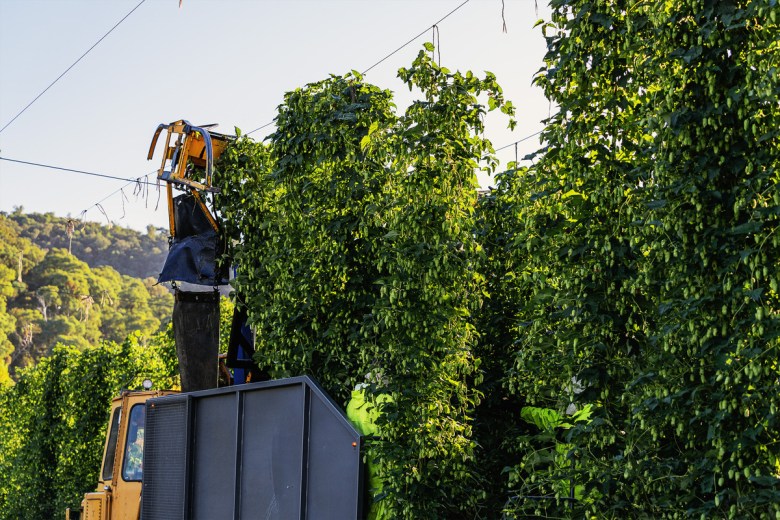 Weather conditions led to reduced hop yields across the board, but high alpha and oil levels indicate a promising crop.
Weather conditions led to reduced hop yields across the board, but high alpha and oil levels indicate a promising crop. The longer I brew mixed-fermentation beers, the more I appreciate just how important the hopping rate is. Controlling lactic acid production by inhibiting lactobacillus is hops' most well-appreciated function in sour beers. Hop compounds become more effective at inhibiting Lactobacillus as the pH drops, creating a natural "limit" on their lactic acid production. What it took me a long time to appreciate was how much hop compounds (beyond IBUs) lead to a greater expression of what I think of as classic Brett "funk."
When Scott and I began the mixed-fermentation program in 2018-2019, generally our issue was beers not souring enough. I started pulling levers (lower hopping rates, higher mash temps, less attenuative primary strains etc.) By 2020-2021, we were having excessive acid production... Most non-fruited beers were dropping to a firmly-acidic 3.1-3.3 pH, while fruited beers were often difficult to drink in quantity at 3.0-3.1 pH with some dipping to "obnoxiously acidic" high-2s.
Fruit contributes simple sugars, which Lactobacillus love, and at the same time dilute the hop compounds in the beer. This can cause a precipitous pH drop. With so much beer already in barrels, my first maneuver was to begin dosing alpha acids into the beer along with fruit when there was already enough acid. We started with reduced iso-alpha-acids (e.g. tetralone/hexalone), but have moved onto Hopsteiner Alpha Extract 20% since it doesn't add perceived bitterness. About .1-.2 g per gallon stops acid production for our bacteria. These products don't significantly change the flavor or add additional aromatic complexity. As a side benefit, they enhance head retention. A small dry hop at this stage would be another option if you wanted stop acidification and add hop aromatics.
At this point we started upping the aged hop rate, or aiming for higher IBU targets when using fresh hops (~15-20 IBUs). At the same time (~2021) Scott and Ken (our head brewer) wanted to try barrel-aging more aromatically hoppy beers... I was resistant. I love hoppy-sour beers, I did a whole talk about them at the 2016 National Homebrewers Conference. Generally my approach had been to make sure the hops go into the beer as close to serving as possible (e.g., dry hop a barrel-aged sour after aging, brew a quick-turn hoppy Brett saison, add a whirlpool addition after kettle souring). I'd tasted too many barrel-soured IPAs and pale ales from great breweries that smelled like "old hoppy beer." That said, Ken and Scott convinced me! At our scale it is a relatively low risk to divert a few barrels of pale ale to see what happens.
We're already "aggressive" with our measures against oxygen pick-up (purging barrels with carbon dioxide before filling, purging the barrel-tool between each fill, purging the bottles before filling etc.), but when we fill barrels with pale ale wort we pull out all the tricks. Most importantly, we selected barrels that could be refilled without rinsing, leaving several gallons of "house culture" at the bottom of each. Our goal was to start the secondary fermentation as quickly as possible to protect the delicate hop compounds. I was amazed how good the resulting beer tasted!
What has really intrigued me is that the hoppier bases have almost universally produced finished beers I'd describe as more Brett-forward (earthy, funky, fruity, horse blanket). What I don't know is why! In American Sour Beers I cited research that Brett can free glycosides in hops, so that could explain the fruity. Maybe hops are just inhibiting Lactobacillus, giving the Brett a healthier environment (in lambics Brett tends to thrive before Pediococcus dramatically lowers the pH). Maybe I'm just being fooled and higher hopping rates (aged or fresh) are adding key compounds that I associate with the "funk" in a Cantillon, Orval (and many of my favorite American mixed-ferms)! These days our typical hopping rate is .5 lbs/bbl of aged hops at the start of the boil, and .5 lbs/bbl or fresh low alpha-acid hops in the whirlpool.
Barrels of Rings is one of the bottles included with the first shipment of the Sapwood Cellars Shipping Club. It started as Rings of Light, brewed summer 2022, racked into barrels after primary fermentation, but before dry hopping. After 10 months of aging, we transfer directly from the two wine barrels into our blending tank (purged with 5.5 pounds of our selected Citra Cryo already in there). We agitated/roused and allowed to settle for a couple days, dropping the hops. Then we primed with sugar and rehydrated wine yeast (as we do for most of our barrel-aged sours) and partially carbonated the beer. As with the barrel fill, we're relying on CO2 purging of the bottles and the rapid refermentation to scavenge oxygen and preserve hop aromatics.
Recipe: Barrels of Rings
OG: 1.063
65% Briess Brewer's 2-row
14% Great Western Malted White Wheat
13% Grain Millers Flaked Oats
8% Best Chit Malt
IBUs: 40
.5 lbs/bbl Meridian @ Whirlpool (212F)
1 lb/bbl New York Cascade @ Whirlpool (180F)
Bravo Salvo Hop Extract @ Whirlpool (180F)
Fermentation with Omega Cosmic Punch (the barrel sheet below is incorrect)
FG (Primary) 1.022
Brewed 8/5/22. Barrels filled 8/11/22
Barrel #6: Fifth-fill Chambourcin red wine barrel that previously held our original barrel-aged pale ale, Measure Twice. That barrel was started with dregs from our collab with Free Will (Erma Extra), but along the way it was filled with bases that had dregs in primary from various American saisons (Casey and Holy Mountain).
Barrel #125: Second-fill Chardonnay white wine barrel that previously held a cider fermented with the Bootleg Biology Biology Mad Fermentationist Saison (plus we added the dregs from a stellar bottle of Barrique Wet Hop Reserve after filling).
6/21/23 116 gallons of beer from the two barrels transferred onto 5.5 pounds of 2022 Citra Cryo. 1.5 oz/gallon.
Carbonated to 2.05 vol, reyeasted with Premier Cuvee (rehydrated on a stir-plate with StartUp Nutrient), primed with enough glucose to add 1.1 vol of CO2 (~3.1 vol total in bottle).
Final pH: 3.65
Final Gravity 1.009
7.1% ABV.
Tasting Notes: Barrels of Rings
(My personal notes from a few months ago)
Smell - Nice blend of citrus (orange) and earthy-Bretty-funk. Still really fresh, no oxidative or old-hop aromatics. Really varied nose with a little pine sap, hay, and melon. Another hoppy base that got funkier than most of our bases.
Appearance - Big dense white head, good retention. Light haze, very pale yellow. Attractive.
Taste - Light lemony tartness, but not sour-sour. Very saison-y. Some bitterness, but it doesn’t clash with the light bitterness.
Mouthfeel - A touch of astringency. Great sptrizy carbonation. Medium-light body.
Drinkability - Really nice. The bitterness does give it a different impression than a classic low-bitterness sour base. More saison-like.
Changes for Next Time - Really good, not much to change on this one. Gin barrels would be fun.
When visiting Epochal Barrel Fermented Ales in Scotland last year I was blown-away by how by how good (owner/brewer) Gareth Young's wild ales were aged on whole hops in the barrels for the entire secondary fermentation. I really enjoyed the first beer we did with it, Violet You're Turning Violet (Mosaic in the barrel, finished with a blend of wild and cultivated blueberries). It seems like a good option especially if you want variety in the hop intensity of a base, e.g., start with a more moderate hopped base and add hops to some barrels for blending options.
My book, American Sour Beers, is turning ten next month! I wrote it from the perspective (and experience) of a homebrewer. I wanted to experiment and learn. I really didn't know much about brewing commercially, creating consistent blends, adapting recipes as a barrel program matured, developing flavors that would sell etc. Looking back I have to ask, did my book help launch 1,000 barrel programs, without providing the knowledge brewers actually needed to succeed?
Over the last decade American craft brewing had an explosion of breweries ramping up barrel-aged sour production, followed by a pretty rapid decline (including multiple mid-sized breweries closing their programs and sour-focused breweries closing). Part of that is the inherently less-predictable nature of mixed-fermentation (when you order a cherry sour beer, what are you expecting? Kriek, cherry juice, cherry vinegar etc.). Compare that to a bourbon-barrel vanilla-bean stout where you have a pretty good idea of what the intent was. I suspect at least part of it was the oversaturation of the market combined with the high prices.
Despite brewing my first sour beer in 2006, becoming a brewery consultant in 2011, writing a book in 2014, and opening a brewery in 2018... I haven't been consistently happy with the barrel-aged mixed-fermentations I made until the last couple years. I certainly never released a beer that I thought was bad, but there were certainly had batches that were too sour, muddled, under/over carbonated, or just didn't "pop." During that time we've also released some amazing beers that I still love!
At Sapwood Cellars we've relied on our local club members, and the people who walk in the door to buy ~10,000 bottles of barrel-aged sour beer a year. That may sound like a lot, but it's less than 5% of our production (and we're a pretty small brewery). There really hasn't been much interest in barrel-aged sour bottles in our limited distribution range. They tend to be beers that sell best when you can explain them directly to the drinker, rather than just have them sitting on a shelf! If only there was a way I could talk directly to beer drinkers interested in sour beer...
Rather than bury the lead more than I already have, Sapwood Cellars barrel-aged mixed-fermentation sours are now available for shipping within much of America through a Membership Club administered by Tavour! Shipping is available to: WA, CA, OR, NM, NV, CO, MN, NY, DC, CT, NE, MA, FL, PA, NH, NJ, ID, TX, KS, IN, WI, MO, IA, IL, MI, ND, VA, RI, NC, SC, and MD.
The first installment of the club is $146 (including shipping) for one 500 mL bottle each of six beers:
Growth Rings 2023: Three-year-blend of barrel-aged Sours, essentially our cuvee of bases, barrels, and microbes showing off our house character. This one isn't refermented with wine yeast, so the dregs would be a good option if you are looking for microbes! It was the second highest-rated "Gueuze" on Untappd in 2023!
Barrels of Rings: Our pale ale base, mixed-fermented in wine barrels and then dry hopped right before bottling. Citrusy-funky with restrained acidity.
Jammiest Bit: Our homage to Hommage, a barrel-aged sour on loads of sour pie cherries and red raspberries. Fruity, funky, tart etc.
Botanicia: A blend of pale sours aged in gin barrels that we then infused with dried limes and quinine. A weird play on a gin-and-tonic... but with a lot more acidity and funk!
Elliptical Orbit 2023: A continuation of the "Dark Funky Saison" series still with my original collaborator and homebrew buddy Alex. For this one he roasted Geisha coffee beans and we infused the barrel-aged dark sour with Geisha cascara (dried coffee cherries).
Fruit of Many Uses: We sequentially racked the same barrel-aged tart/funky base onto second-use Chardonnay wine grapes, cherries, raspberries, and white nectarines. All of the fruit was whole/local.
Over the next couple weeks I'll be posting my detailed tasting notes on each of the beers, along with recipes, lessons learned, and suggestions for brewing something similar at home! I'll repeat for each club release, assuming enough people sign-up for the club to make it viable.
Over the last five years it isn't "one simple trick" we learned that improved our beer. It's the accumulation of 100 little things from ingredient selection, to blending, to process refinement, to equipment that we've figured out. It's sitting down with each beer, drinking, thinking, taking detailed notes, and iterating. So much of it is not doing it by myself, having Scott, Ken, and Spencer to push to do things I wouldn't have (Botanica was Ken's baby, and Barrels of Rings was Scott's). Both are delicious, and they are certainly beers I would not have brewed if it was all up to me!
Some brewers are finding unexpected flavors growing right outside their doors, from mushrooms to pine tips.
The post Foraging For Beer’s Wildest Ingredients appeared first on CraftBeer.com.
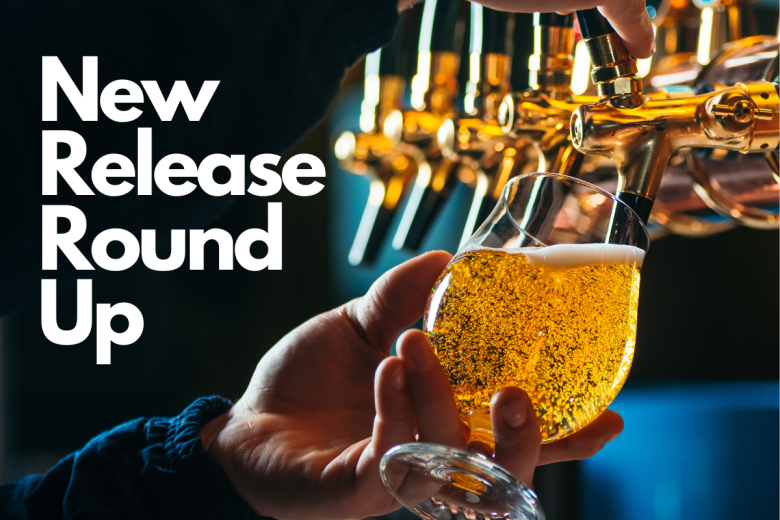 A popular Sydney brewery teams up with a clothing brand, a sour highlights native fruit from the Kimberly, and a 20-year anniversary release.
A popular Sydney brewery teams up with a clothing brand, a sour highlights native fruit from the Kimberly, and a 20-year anniversary release.  Max Shafer joins me this week to discuss Craft Pilsners, decoction and controlling the pH of your beer during the whirlpool and for dry hopping. Subscribe on iTunes to Audio version or Video version or Spotify or Google Play Download the MP3 File– Right Click and Save As to download this mp3 file. Your browser […]
Max Shafer joins me this week to discuss Craft Pilsners, decoction and controlling the pH of your beer during the whirlpool and for dry hopping. Subscribe on iTunes to Audio version or Video version or Spotify or Google Play Download the MP3 File– Right Click and Save As to download this mp3 file. Your browser […] The worlds of beer and chicken have been aligned for ages, but it wasn’t until 2021 that chimaek, a Korean portmanteau for fried chicken and light beers, was welcomed into the Oxford English Dictionary.
The post Bird + Brew: A Culinary Coupling appeared first on CraftBeer.com.
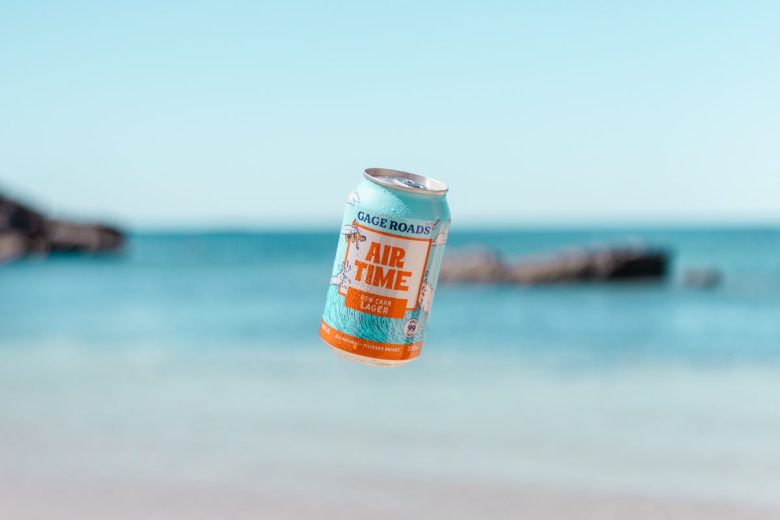 New low carb lagers and an Australian rollout of a popular non-alcoholic stout hit the shelves and beer taps.
New low carb lagers and an Australian rollout of a popular non-alcoholic stout hit the shelves and beer taps. In addition to music venues, bodacious barbecue, and epic tacos, this booming metropolis is The Lone Star State’s leading locale for incredible craft beer.
The post Three Beer-Filled Days in Austin, Texas appeared first on CraftBeer.com.
Bière de garde is a malty style of beer that is undiscovered to many. Translated to "beer for keeping," the style was traditionally brewed in Northern France and is known for its malt-focused, toasty taste, and slight sweetness.
The post Bière de Garde: ‘A Breath of Fresh Air’ appeared first on CraftBeer.com.
 Dr Axel Goehler, the CEO of Bestmalz joins us to discuss the state of German malting, European Craft Brewing and the recent BRAU 2023 conference. Subscribe on iTunes to Audio version or Video version or Spotify or Google Play Download the MP3 File– Right Click and Save As to download this mp3 file. Your browser […]
Dr Axel Goehler, the CEO of Bestmalz joins us to discuss the state of German malting, European Craft Brewing and the recent BRAU 2023 conference. Subscribe on iTunes to Audio version or Video version or Spotify or Google Play Download the MP3 File– Right Click and Save As to download this mp3 file. Your browser […]  This week I welcome back Colin Kaminski to discuss oxygen in finished beer, hot side aeration and how to minimize oxygen pickup. Subscribe on iTunes to Audio version or Video version or Spotify or Google Play Download the MP3 File– Right Click and Save As to download this mp3 file. Your browser does not support […]
This week I welcome back Colin Kaminski to discuss oxygen in finished beer, hot side aeration and how to minimize oxygen pickup. Subscribe on iTunes to Audio version or Video version or Spotify or Google Play Download the MP3 File– Right Click and Save As to download this mp3 file. Your browser does not support […]  This week I examine a group of US hops from the Pacific Northwest. These American hops form the heart of the US Craft Beer revolution and are widely used in American Pale Ale, and the wide array of India Pale Ales (IPAs) that now dominate Craft Beer production in the US. The Pacific Northwest Hops […]
This week I examine a group of US hops from the Pacific Northwest. These American hops form the heart of the US Craft Beer revolution and are widely used in American Pale Ale, and the wide array of India Pale Ales (IPAs) that now dominate Craft Beer production in the US. The Pacific Northwest Hops […]  Adam Mills joins me this week to discuss the use of Thiol boosting yeast, mash hopping and other techniques to enhance the tropical/fruity flavors in IPAs and New England IPAs. Subscribe on iTunes to Audio version or Video version or Spotify or Google Play Download the MP3 File– Right Click and Save As to download […]
Adam Mills joins me this week to discuss the use of Thiol boosting yeast, mash hopping and other techniques to enhance the tropical/fruity flavors in IPAs and New England IPAs. Subscribe on iTunes to Audio version or Video version or Spotify or Google Play Download the MP3 File– Right Click and Save As to download […] 